| 08:30 |
Registration
|
| 09:00 |
President's Introduction
Craig Parker 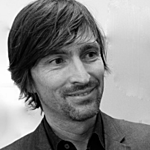 Craig Parker has been involved in surgical dentistry for over 25 years. He runs a private referral practice in Leeds, where the majority of his work is in implant dentistry. He has been actively involved in the Faculty of General Dental Practice (UK) at the Royal College of Surgeons where he was on the board of examiners for over 10 years and he was elected to the national board where he served for 3 years. He has trained with some of the most respected implantologists in the world including Professor Buser at the University of Bern, Switzerland. He is a member, accredited mentor and speaker with the International Team for Implantology (ITI). Craig is President of the Association of Dental Implantology where he has been on the national board for five years. Craig’s special interest is in digital workflow in dental implantology: using ultra-precision digital treatment planning, cone beam CT imaging, digital intra-oral scanning and CAD-CAM restoration to maximise hard and soft tissue aesthetics and functionality. He regularly lectures to various study groups and diploma and MSc programmes in the UK and occasionally at national and international dental congresses. Craig Parker has been involved in surgical dentistry for over 25 years. He runs a private referral practice in Leeds, where the majority of his work is in implant dentistry. He has been actively involved in the Faculty of General Dental Practice (UK) at the Royal College of Surgeons where he was on the board of examiners for over 10 years and he was elected to the national board where he served for 3 years. He has trained with some of the most respected implantologists in the world including Professor Buser at the University of Bern, Switzerland. He is a member, accredited mentor and speaker with the International Team for Implantology (ITI). Craig is President of the Association of Dental Implantology where he has been on the national board for five years. Craig’s special interest is in digital workflow in dental implantology: using ultra-precision digital treatment planning, cone beam CT imaging, digital intra-oral scanning and CAD-CAM restoration to maximise hard and soft tissue aesthetics and functionality. He regularly lectures to various study groups and diploma and MSc programmes in the UK and occasionally at national and international dental congresses.
Qualifications: BChD MFGDP (UK) DPDS |
| 09:10 |
An Opportunity to Design Your Own Implant The subject of implant design is controversial and the science may be easily clouded in a competitive market. This presentation aims to review key aspects of implant design and inspire clinicians to question market driven innovations. Participants will be able to 'design' their own theoretical implant following consideration of each of the following design features: material; macro geometry; surface treatment; implant-abutment interface; occlusion and mechanics; surgical and prosthetic protocols (immediate placement/loading).
Stuart Kilner 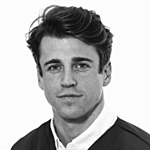 Stuart Kilner's practice is solely limited to dental implant restorations. He is a graduate of Manchester's Dental University. Currently he works as a full time clinician providing full arch restorations in private practice in London. His scope of practice within dental implants involved single implants and full arch graftless rehabilitation. Through his career he has spent time lecturing for Evodental in Munich, Germany and Tel Aviv, Israel on the topic of full arch rehabilitation with dental implants. Recently he has played a role in revising Evodental implant macro design for greater primary stability in immediate placement, immediate load graftless full arch cases. Stuart Kilner's practice is solely limited to dental implant restorations. He is a graduate of Manchester's Dental University. Currently he works as a full time clinician providing full arch restorations in private practice in London. His scope of practice within dental implants involved single implants and full arch graftless rehabilitation. Through his career he has spent time lecturing for Evodental in Munich, Germany and Tel Aviv, Israel on the topic of full arch rehabilitation with dental implants. Recently he has played a role in revising Evodental implant macro design for greater primary stability in immediate placement, immediate load graftless full arch cases.
Qualifications: BDS |
| 09:35 |
Using Digital Dentistry to Help with Immediate Implant Placements How digital dentistry has made the provision of immediate replacement of a tooth with an implant retained provisional a much more predictable and much less stressful process.
Eimear O’Connell 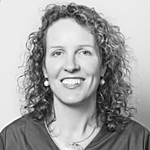 Dr O'Connell received her dental degree from Universiy of Edinburgh. She has run her own private dental practice in Edinburgh for over 20 years. She received her MFGDP and FFGDP from the Royal College of Surgeons London and is currently the Regional Representative for Scotland on the Association of Dental Implantology Committee. In 2014 Dr O'Connell won a UK business award for Software of Excellence as well as winning Best Overall Practice in Scotland. In 2015 her practice won the Best Patient Care award. She has been using Cerec technology since 2008, and believes the increased success of her practice has much to do with the implementation of digital dentistry within practice. Dr O'Connell received her dental degree from Universiy of Edinburgh. She has run her own private dental practice in Edinburgh for over 20 years. She received her MFGDP and FFGDP from the Royal College of Surgeons London and is currently the Regional Representative for Scotland on the Association of Dental Implantology Committee. In 2014 Dr O'Connell won a UK business award for Software of Excellence as well as winning Best Overall Practice in Scotland. In 2015 her practice won the Best Patient Care award. She has been using Cerec technology since 2008, and believes the increased success of her practice has much to do with the implementation of digital dentistry within practice.
Qualifications: BDS MFGDP DipImpDent RCS Ed FFGDP |
| 10:00 |
Quality Of Life Outcomes (QOL) in Implant Rehabilitation for Patients with Orofacial Deformity This presentation will illustrate the challenges in oral rehabilitation of patients with Congenital Orofacial Deformity (OFD) and acquired deformity in patients with cancer of the head and neck (HNC). These patients have particular challenges in terms of their oral rehabilitation. Unlike other conditions, OFD cannot be hidden. Facial aesthetics, speech and swallowing function are inevitably disturbed. Consequently, this has a negative impact on social confidence, self-esteem and quality of life. Traditional prosthetic rehabilitation cannot always provide the best oral and aesthetic rehabilitation in these patient groups. For example, in HNC patients, initially the main focus of treatment is elimination of the cancer. There is a clear shift in the patient’s treatment expectations towards restoration of a sense of well being and a need for optimal facial and oral rehabilitation (QOL outcomes). Individual patient implant treatment journeys and video testimonials will be presented.
Catherine Drysdale 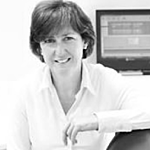 Catherine is a Consultant in Restorative Dentistry and Oral Rehabilitation at Musgrove Park Hospital in Taunton. She has a special interest in the management of patients undergoing treatment for cancers of the head and neck and congenital orofacial deformity. Catherine is involved in the implant programme to rehabilitate these patients. Catherine graduated from Glasgow University. Following hospital posts in Oral and Maxillofacial surgery, Catherine completed the FDS RCS (Eng) in Oral and Maxillofacial surgery. She then took an MSc in Restorative Dentistry at Guy's Hospital while working as a lecturer and tutor at the Dental School. Catherine completed Consultant training in 1996. Catherine now runs her own specialist referral practice in implant and restorative dentistry at Rumwell Hall, Taunton. Catherine continues to lecture widely on all matters related to implant and restorative dentistry. Catherine acted as a Trustee on the Board of the Association of Dental Implantology from 2009-2015. Catherine has recently launched a charitable website www.mouthcareincancer.com. This provides valuable information on how to avoid unwanted oral complications during treatment for head and neck cancer as well as unwanted oral complications during chemotherapy for other cancers. Catherine is a Consultant in Restorative Dentistry and Oral Rehabilitation at Musgrove Park Hospital in Taunton. She has a special interest in the management of patients undergoing treatment for cancers of the head and neck and congenital orofacial deformity. Catherine is involved in the implant programme to rehabilitate these patients. Catherine graduated from Glasgow University. Following hospital posts in Oral and Maxillofacial surgery, Catherine completed the FDS RCS (Eng) in Oral and Maxillofacial surgery. She then took an MSc in Restorative Dentistry at Guy's Hospital while working as a lecturer and tutor at the Dental School. Catherine completed Consultant training in 1996. Catherine now runs her own specialist referral practice in implant and restorative dentistry at Rumwell Hall, Taunton. Catherine continues to lecture widely on all matters related to implant and restorative dentistry. Catherine acted as a Trustee on the Board of the Association of Dental Implantology from 2009-2015. Catherine has recently launched a charitable website www.mouthcareincancer.com. This provides valuable information on how to avoid unwanted oral complications during treatment for head and neck cancer as well as unwanted oral complications during chemotherapy for other cancers.
Qualifications: BDS, FDS RCS (Eng), MSc (Lond) |
| 10:25 |
Panel Discussion
Moderator and preceding speakers
|
| 10:40 |
Tea/Coffee & Exhibition
|
| 11:00 |
Implant Failure – What Can We Learn? Implant Failure... we all worry about it... we are all relieved when it is not one of "our implants"! Early failure. Late failure. Mechanical Failure. Biological Failure. Iatrogenic failure. Component failure. Patient failure. Aesthetic failure. Dentist failure. We see implants fail in many different ways. I have over 20 years’ experience working in implant dentistry both in hospital and private practice environments. I have witnessed first-hand most of the problems that are encountered in implant dentistry. In this lecture I aim to share my experience in order to help colleagues achieve optimal results and minimise failure, and will share some tips on how to rescue certain situations. The objectives are to advise colleagues how to avoid getting themselves into deep water and how we can keep ourselves and our patients safe. I firmly believe that analysing circumstances of failure can be a more powerful learning experience than seeing a dozen perfectly executed cases!
Mark Willings 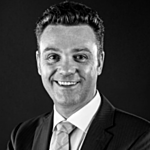 Mark is Lead Clinician and Principal of Horbury Dental Implant Clinic in Wakefield. He is also a Partner of the Multi-Award winning practice - Dental Excellence at Harewood. Mark has been involved with implant dentistry for over 25 years and has a wealth of experience in this field covering all major implant systems. Mark was one of the first cohort of Diplomates to graduate from the RCS and was a Tutor for several years. He continues to lecture on this programme. Mark also worked at Manchester Dental Hospital for 10 years exclusively involved in all aspects of surgical implantology including extra oral harvesting of autogenous grafts for advanced rehabilitations. Mark has taught postgraduate programmes at both the Universities of Manchester and Leeds. He has also been a Key Opinion Leader for Bredent and Astra Tech. Mark has lectured previously at ADI study clubs and at the Members' National Forum in 2007. Mark is Lead Clinician and Principal of Horbury Dental Implant Clinic in Wakefield. He is also a Partner of the Multi-Award winning practice - Dental Excellence at Harewood. Mark has been involved with implant dentistry for over 25 years and has a wealth of experience in this field covering all major implant systems. Mark was one of the first cohort of Diplomates to graduate from the RCS and was a Tutor for several years. He continues to lecture on this programme. Mark also worked at Manchester Dental Hospital for 10 years exclusively involved in all aspects of surgical implantology including extra oral harvesting of autogenous grafts for advanced rehabilitations. Mark has taught postgraduate programmes at both the Universities of Manchester and Leeds. He has also been a Key Opinion Leader for Bredent and Astra Tech. Mark has lectured previously at ADI study clubs and at the Members' National Forum in 2007.
Qualifications: BDS MFGDP ( UK) Dip Implant Dent RCS (Eng) FFGDP (UK) |
| 11:25 |
What Ten Years of Oral Bisphosphonates Have Taught Us Based on the work of JE Davies and Robert Marx and combining it with his own experience, Nigel Jones takes a scientific look at the effects of oral bisphosphonates on bone metabolism, and on dental implants placed in patients taking these medications. The presentation includes animations and clinical slides to explode some of the myths and to cement some of the truths surrounding the outcomes of dental implants placed and restored in such patients.
Nigel Jones 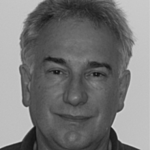 Nigel Jones runs a referral practice in Abergavenny limited to the planning, placement, and restoration of about 500 implants a year. He is lead-tutor on the RCS Implant Diploma, and as such lectures on many aspects of implant dentistry. He is married to Sarah, and they have four children and one grandchild. The South Wales police take a keen interest in his driving, but are less impressed by his guitar playing. Nigel Jones runs a referral practice in Abergavenny limited to the planning, placement, and restoration of about 500 implants a year. He is lead-tutor on the RCS Implant Diploma, and as such lectures on many aspects of implant dentistry. He is married to Sarah, and they have four children and one grandchild. The South Wales police take a keen interest in his driving, but are less impressed by his guitar playing.
Qualifications: BDS, DipImpDent RCS, FFGDP(UK), MSc Implantology |
| 11:50 |
The Use of an Option Grid to Present the Treatment Modalities for Replacing Missing Teeth in the Anterior Regions Shared decision-making is an important aspect of dentistry which is required in everyday practice. When discussing the options for replacing missing anterior teeth, often dentists do not provide a consistent view of the modalities available. An option grid, utilising statistics obtained from critically appraised literature, is a useful tool in presenting this information to patients. Through a clear, user-friendly document with visual representation, both dentists and patients would find the discussion easier to follow. The literature used also helps boost the patient’s confidence that they are being treated with the latest evidence in mind. Having trialled this in a general dental practice, the overwhelming feedback by dentists and patients was that the grid was very helpful. As implant specialists, this would be an excellent tool to compare implants with other modalities available and to help guide patients to the most appropriate treatment for their case.
Noor Al-Hadi 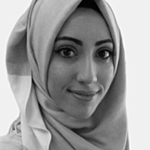 Having graduated in 2014, Noor went on to complete her dental foundation training followed by dental core training in various hospitals including UCLH, Great Ormond Street, the Eastman Dental Hospital and Northwick Park Hospital. She worked in the Oral and Maxillofacial Surgery Departments as well as Oral Medicine and Oral Surgery. She now currently works as a dental officer in the community dental services as part of the Whittington Health trust. Noor is keen on pursuing specialty training in the future and has an interest in evidence based dentistry. Having graduated in 2014, Noor went on to complete her dental foundation training followed by dental core training in various hospitals including UCLH, Great Ormond Street, the Eastman Dental Hospital and Northwick Park Hospital. She worked in the Oral and Maxillofacial Surgery Departments as well as Oral Medicine and Oral Surgery. She now currently works as a dental officer in the community dental services as part of the Whittington Health trust. Noor is keen on pursuing specialty training in the future and has an interest in evidence based dentistry.
Qualifications: BDS (Hons) MFDS RCS (Ed) |
| 12:15 |
Panel Discussion
Moderator and preceding speakers
|
| 12:30 |
Lunch & Exhibition
|
| 13:15 |
AGM (in Room A)
|
| 13:45 |
Guided Surgery - Friend or Foe? The use of guided surgery is becoming more and more common with more 3D printers becoming affordable to practitioners to have onsite. We are entering an age whereby we can use our own CBCT and intraoral scanners in-house. My lecture will cover the various systems that are available on the market today, as well as going through the use of the 3Shape system and their Implant Studio software as a demonstration of how to plan a case and design a surgical guide. I will also aim to demonstrate the practical use of a guide and highlight both the advantages and disadvantages of its use in real world surgical situations. The use of stents during implant placement present a lot of challenges and pitfalls but can be a excellent tool at the same time.
Avik Dandapat 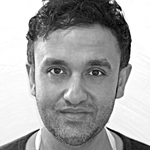 Avik is the principal implant dentist at the Dental Implant Centre, Reading, and has placed over 5000 implants. He has extensive qualifications relating to implant dentistry attained here in the UK. Avik attends both centres in Harley Street and Twyford near Reading. He also lectures in implant dentistry nationally in the UK and abroad. Avik qualified from Birmingham University where he gained his BDS qualification. He went on to work in private practice in Royal Leamington Spa and attained the MFGDP (UK) qualification by exam 2 years after qualifying (at the earliest possible time allowed). Avik also did sabbatical work in Calcutta, India - where the epidemic of oral cancer exists - working closely with maxillo-facial surgeons during this period he gained valuable experience in the surgical treatment and reconstruction of patients diagnosed with oral squamous cell carcinoma. This surgical experience allowed Avik to gain deep insight into surgery and the benefits of the use of titanium dental implants to provide these debilitated patients with a reasonable quality of life after radical surgery, often removing large areas of the jaw and teeth. He then embarked on further post-graduate training at the Royal College of Surgeons England, London (RCS) Eng, relating to dental implants. He was awarded the Diploma in Dental Implantology by exam and also further gained the Advanced Certification in Bone Grafting, the youngest dentist in the UK to hold this qualification at the point of examination. After this he went on to complete the Masters Degree in Implant Dentistry from the University of Leeds. Avik is the principal implant dentist at the Dental Implant Centre, Reading, and has placed over 5000 implants. He has extensive qualifications relating to implant dentistry attained here in the UK. Avik attends both centres in Harley Street and Twyford near Reading. He also lectures in implant dentistry nationally in the UK and abroad. Avik qualified from Birmingham University where he gained his BDS qualification. He went on to work in private practice in Royal Leamington Spa and attained the MFGDP (UK) qualification by exam 2 years after qualifying (at the earliest possible time allowed). Avik also did sabbatical work in Calcutta, India - where the epidemic of oral cancer exists - working closely with maxillo-facial surgeons during this period he gained valuable experience in the surgical treatment and reconstruction of patients diagnosed with oral squamous cell carcinoma. This surgical experience allowed Avik to gain deep insight into surgery and the benefits of the use of titanium dental implants to provide these debilitated patients with a reasonable quality of life after radical surgery, often removing large areas of the jaw and teeth. He then embarked on further post-graduate training at the Royal College of Surgeons England, London (RCS) Eng, relating to dental implants. He was awarded the Diploma in Dental Implantology by exam and also further gained the Advanced Certification in Bone Grafting, the youngest dentist in the UK to hold this qualification at the point of examination. After this he went on to complete the Masters Degree in Implant Dentistry from the University of Leeds.
Qualifications: BDS (Birm) MFGDP (UK) RSC Eng Dip. Imp. Dent RSC (Eng) MSc (Implant Dentistry) Univ Leeds Adv. Cert. Imp. RCS (Eng) |
| 14:10 |
Dynamic Navigation: A Pioneer's Perspective Precision and safety are two over-riding considerations when planning and placing dental implants. With the advent of digital technology and 3D imaging implantologists have seen the emergence of planning software, drilling guides and computer guidance systems. Dynamic navigation allows the surgeon to observe the position and path of the implant drill in real time in 3 dimensions throughout site preparation. Implants can be placed freehand, confidently in the optimum, restoratively driven position with an emphasis on precision and patient safety. The first commercially available dynamic navigation system for dental implants was launched in the UK and Europe in the latter part of 2015. This presentation gives an overview of the theoretical and practical processes of dynamic navigation, and looks at how an early adopter of this new technology has incorporated it as routine in his implant treatment protocol. Case studies include single implants to multiple in a fully edentulous arch.
David Burgess 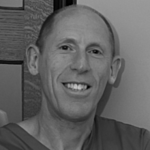 David Burgess has been principal of Carbis Bay Dental Care in Cornwall since 1988, and has placed over 2000 implants. Throughout his career, David has striven to combine clinical perfection with the ultimate in patient care. With those goals in mind, he has been a willing pioneer of new technology, particularly in the field of digital dentistry. David was the first UK clinician to introduce dynamic navigation into his implant treatment workflow, with the objective of achieving a higher degree of precision in implant placement and greater patient comfort. He has been awarded the status of Master Clinical Trainer and is actively involved in training other clinicians in all aspects of dynamic navigation. David has also been involved in the testing of prototypes and development of products and techniques. He has had numerous articles on dynamic navigation published in journals worldwide and is a member of the Dynamic Navigation Society. David Burgess has been principal of Carbis Bay Dental Care in Cornwall since 1988, and has placed over 2000 implants. Throughout his career, David has striven to combine clinical perfection with the ultimate in patient care. With those goals in mind, he has been a willing pioneer of new technology, particularly in the field of digital dentistry. David was the first UK clinician to introduce dynamic navigation into his implant treatment workflow, with the objective of achieving a higher degree of precision in implant placement and greater patient comfort. He has been awarded the status of Master Clinical Trainer and is actively involved in training other clinicians in all aspects of dynamic navigation. David has also been involved in the testing of prototypes and development of products and techniques. He has had numerous articles on dynamic navigation published in journals worldwide and is a member of the Dynamic Navigation Society.
Qualifications: BDS DPDS MScConSed |
| 14:35 |
Digital Planning and In-House Printing A contemporary approach to digital implant planning. Using coDiagnostiX and Implant Studio. And in-house printing of surgical guides.
Sam Elassar 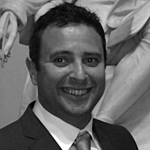 Sam Elassar runs his own implant referral practice in Dundee, He qualified from Dundee University in 1997 and has worked in general practice ever since. He gained his implant diploma from the Royal College of Surgeons in London in 2012. Sam is very passionate about digital dentistry and the use of digital work low in implant dentistry, he plans and restores all his cases digitally and prints his guides in-house. He uses intra-oral scanning for both the planning and restoring of his cases which include both partial and full arch cases. Over the last 2 years he has gained extensive experience using coDiagnostiX and Implant Studio and in-house printing. He has placed over 500 implants using digitally designed 3D printed guides. He also places and restores multiple implant systems. Sam Elassar runs his own implant referral practice in Dundee, He qualified from Dundee University in 1997 and has worked in general practice ever since. He gained his implant diploma from the Royal College of Surgeons in London in 2012. Sam is very passionate about digital dentistry and the use of digital work low in implant dentistry, he plans and restores all his cases digitally and prints his guides in-house. He uses intra-oral scanning for both the planning and restoring of his cases which include both partial and full arch cases. Over the last 2 years he has gained extensive experience using coDiagnostiX and Implant Studio and in-house printing. He has placed over 500 implants using digitally designed 3D printed guides. He also places and restores multiple implant systems.
Qualifications: BDS (Dundee) MFDS RCPS(Glas) MJDF RCS (London) DipImpDent RCS (London) PG Cert Sedation (UCL) |
| 15:00 |
Panel Discussion
Moderator and preceding speakers
|
| 15:15 |
Tea/Coffee & Exhibition
|
| 15:30 |
An Introduction to Osseodensification Osseodensification is a new technique that is capable of maximising bone volume and quality by manipulating the bone within its elastic limit. This means bone is not removed from the site during osteotomy preparation, but rather displaced, thus preserving tissue. It is minimally invasive and gives control of insertion torques to achieve primary stability - even in poor quality bone. It may be used to expand treatment options in narrower ridges, complete sinus augmentations with lower morbidity and also as an adjunct to GBR. Very successful in the US, it is changing the way implant dentistry is done and as a treatment modality offers clinical advantages in nearly all osteotomy sites. This talk will give an overview of the technique as well and the science supporting it and some indication of clinical applications.
Jason Buglass 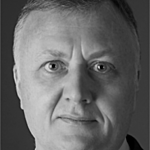 Jason has been in private practice for 27 years, providing implants for 24 of those years. A long-standing member of the ADI, he previously ran a Study Club. Having provided implant training courses for many years he set up Dentale, an implant training organisation now celebrating its 10th anniversary. Jason also runs Implantium UK, which distributes Dentium implants in the UK. Jason has been using Versah drills since the beginning of 2016 and is also the UK distributor for Versah. Jason has been in private practice for 27 years, providing implants for 24 of those years. A long-standing member of the ADI, he previously ran a Study Club. Having provided implant training courses for many years he set up Dentale, an implant training organisation now celebrating its 10th anniversary. Jason also runs Implantium UK, which distributes Dentium implants in the UK. Jason has been using Versah drills since the beginning of 2016 and is also the UK distributor for Versah.
Qualifications: BDS |
| 15:55 |
Slow Drilling Protocol: The Practical Considerations and Evidence Base for this Osteotomy Preparation Technique Traditional techniques for osteotomy site preparation involve high speed drilling with sufficient irrigation. Research suggests that slow drilling provides great benefits over these techniques, including allowing for the harvesting of vital autogenous bone with greater osteogenic potential. This provides a more predictable alternative to the other available methods of guided bone regeneration. Slow drilling provides the clinician with greater tactile and visual control over the hard tissue surgery and may lead to a reduced rate of early surgical complications. I will be presenting the existing evidence base for this technique and the practical considerations for performing it.
Aly Virani 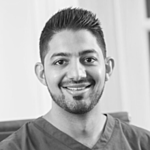 Aly Virani is a graduate of Cardiff University and works as a Clinical Research Fellow and a Clinical Lecturer at Bristol Dental Hospital, University of Bristol. His research interests include developing research methodologies, periodontal conditions, bone augmentation and peri-implant lesions, the scientific evaluation of oral health care products, toothwear, dentine hypersensitivity and tooth whitening. He is currently involved in clinical research studies with publications in peer-reviewed journals. Aly is involved with undergraduate teaching and training of periodontology at the University of Bristol and has also lectured at ADI events. Aly also works in private practice at Rhiwbina Dental Surgery in Cardiff. He maintains a general list with a particular interest in periodontal disease and implants. He is an active member of the British Society of Periodontology and International Team for Implantology. He is also a Member of the Joint Dental Faculties of the Royal College of Surgeons (England) and the Welsh Representative on the Committee for the Association of Dental Implantology. Aly Virani is a graduate of Cardiff University and works as a Clinical Research Fellow and a Clinical Lecturer at Bristol Dental Hospital, University of Bristol. His research interests include developing research methodologies, periodontal conditions, bone augmentation and peri-implant lesions, the scientific evaluation of oral health care products, toothwear, dentine hypersensitivity and tooth whitening. He is currently involved in clinical research studies with publications in peer-reviewed journals. Aly is involved with undergraduate teaching and training of periodontology at the University of Bristol and has also lectured at ADI events. Aly also works in private practice at Rhiwbina Dental Surgery in Cardiff. He maintains a general list with a particular interest in periodontal disease and implants. He is an active member of the British Society of Periodontology and International Team for Implantology. He is also a Member of the Joint Dental Faculties of the Royal College of Surgeons (England) and the Welsh Representative on the Committee for the Association of Dental Implantology.
Qualifications: BDS (Hons) MJDF RCS (Eng) |
| 16:20 |
Bone Expansion in Implant Dentistry I will present a talk on bone expansion; a technique that I have been using successfully for many years since it was developed in the 70’s by Dr Hilt Tatum. This is a technique that can be used for immediate placement cases to increase primary stability, where bone augmentation is difficult or would cause increased patient morbidity by comparison to traditional grafting and delayed placement techniques. I will present a case that has a significant long term follow up to demonstrate the efficacy of this technique and explain where bone expansion may be suitable as well as safely demonstrate the steps involved. I am hoping that by increasing awareness of bone expansion in implant dentistry that it will become a more recognised approach in the toolkit of skills available to us all when we do place implants.
Balwant Vekaria 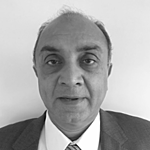 Dr Balwant Vekaria qualified in 1981 from Leeds Dental Hospital. He obtained a Diploma in Implant Dentistry from Lille University (France) in 2006. He placed his first implant in 1984. Since then he has treated hundreds of patients over a 30 year period with over 10,000 dental implants. From 1996-2016 he has assisted Professor Hilt Tatum, on a one to one basis in developing innovative implant techniques and surgical procedures, for over 3000 hours. An Associate Fellowship in Implant Dentistry was awarded by The Association of American Implant Dentists USA in 2006. He obtained an Aesthetic Advantage certificate in Advanced Aesthetics from Larry Rosenthal Institute New York, University in USA in 2002. Routinely, he uses bone expansion, sinus grafting, segmental osteotomy and block grafting techniques in dental implant restorative treatments to achieve high aesthetics. He has been a Keynote and a Guest speaker on the above topics in the USA. Dr Balwant Vekaria qualified in 1981 from Leeds Dental Hospital. He obtained a Diploma in Implant Dentistry from Lille University (France) in 2006. He placed his first implant in 1984. Since then he has treated hundreds of patients over a 30 year period with over 10,000 dental implants. From 1996-2016 he has assisted Professor Hilt Tatum, on a one to one basis in developing innovative implant techniques and surgical procedures, for over 3000 hours. An Associate Fellowship in Implant Dentistry was awarded by The Association of American Implant Dentists USA in 2006. He obtained an Aesthetic Advantage certificate in Advanced Aesthetics from Larry Rosenthal Institute New York, University in USA in 2002. Routinely, he uses bone expansion, sinus grafting, segmental osteotomy and block grafting techniques in dental implant restorative treatments to achieve high aesthetics. He has been a Keynote and a Guest speaker on the above topics in the USA.
Qualifications: B.Ch.D (Leeds) DUI (Lille) |
| 16:45 |
Panel Discussion
Moderator and preceding speakers
|
| 17:00 |
Close, followed by Drinks Reception
|